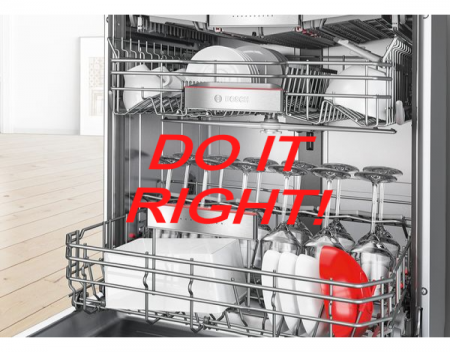Blog Categories
- Appliances Four
- Athletic Seating
- Auto Helpers
- Automated Stock Rooms
- Chocolate Four
- CuraFlo
- Damaged Goods Dating
- Flood Insurance Four
- Game Addict
- Hi Tech Pest Control
- HVAC Four
- Medical Labels Four
- Mental Health Four
- National CWS
- Promotional Ideas
- Seguros Lara Insurance
- Stem Cell Worx
- The Hidden Truth
- The Last Refuge
- The Mozilla Blog
- Video Editing Four
- Web Design Dev
- Website Development Four
- Windows Blog
How to Load the Dishwasher

Dishwashers have to be one of the most hardworking appliances found in the kitchen. If you have the right brand, your appliance should deliver sparkling results every time. However, even the most high-end dishwasher won’t get the job done if it’s loaded improperly. These following tips should help your dishwasher deliver optimum results.
Top Rack
When loading the dishwasher, ensure that all cups, glasses, and small bowls are placed upside down in the top rack. Avoid overfilling the top rack with too many items, which would increase the chances of breakage and obstructs the flow of water and detergent. Any plastic items should be placed on the top rack, too, as the heat from the bottom rack could potentially melt plastics. Make sure that any smaller items are secured and won’t fall through the gaps, which could block the washer arm or land on the heating element.
Bottom Rack
Any plates, serving bowls, or any other larger items should be placed on the bottom rack. Put the largest items to the side so they don’t block the sprayer. Be sure to scrape off any chunks of leftover food into the trash before loading them into the appliance. Aluminum and stainless steel can usually be loaded into the dishwasher, but wood, bronze, and brass should all be hand-washed to avoid discolouration or damage.
Utensils
Any utensils should be loaded in handle-first so that spoons and the prongs of your forks are facing up. Knives however should be placed point-down so that you don’t cut yourself when you unload them. Mix spoons, forks, and knives together to keep them from nesting.
Unloading
When unloading the dishwasher, empty the bottom rack first. If not, water that collects on the concave surfaces of mugs and glasses in the top rack will spill onto the dishes being kept in the rack below.
Overcrowding
Avoid overcrowding the dishwasher in general. You may think this is an easy way to save water, but it usually means you’ll have to rewash a lot of pieces. Crowding the dishes and stacking them on top of each other causing “nesting,” preventing your dishes from being cleaned evenly.
Re Posted From: How to Load the Dishwasher

Dishwashers have to be one of the most hardworking appliances found in the kitchen. If you have the right brand, your appliance should deliver sparkling results every time. However, even the most high-end dishwasher won’t get the job done if it’s loaded improperly. These following tips should help your dishwasher deliver optimum results.
Top Rack
When loading the dishwasher, ensure that all cups, glasses, and small bowls are placed upside down in the top rack. Avoid overfilling the top rack with too many items, which would increase the chances of breakage and obstructs the flow of water and detergent. Any plastic items should be placed on the top rack, too, as the heat from the bottom rack could potentially melt plastics. Make sure that any smaller items are secured and won’t fall through the gaps, which could block the washer arm or land on the heating element.
Bottom Rack
Any plates, serving bowls, or any other larger items should be placed on the bottom rack. Put the largest items to the side so they don’t block the sprayer. Be sure to scrape off any chunks of leftover food into the trash before loading them into the appliance. Aluminum and stainless steel can usually be loaded into the dishwasher, but wood, bronze, and brass should all be hand-washed to avoid discolouration or damage.
Utensils
Any utensils should be loaded in handle-first so that spoons and the prongs of your forks are facing up. Knives however should be placed point-down so that you don’t cut yourself when you unload them. Mix spoons, forks, and knives together to keep them from nesting.
Unloading
When unloading the dishwasher, empty the bottom rack first. If not, water that collects on the concave surfaces of mugs and glasses in the top rack will spill onto the dishes being kept in the rack below.
Overcrowding
Avoid overcrowding the dishwasher in general. You may think this is an easy way to save water, but it usually means you’ll have to rewash a lot of pieces. Crowding the dishes and stacking them on top of each other causing “nesting,” preventing your dishes from being cleaned evenly.
Re Posted From: How to Load the Dishwasher

